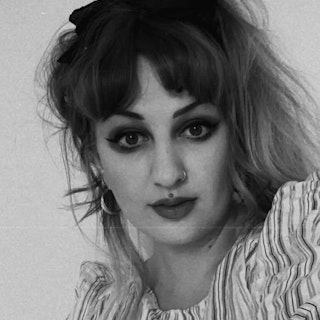Can a straight-talking skunk make First Direct famous again? Inside its new ad strategy
We sit down with the marketers returning the bank to its irreverent roots as it looks to make itself known to young people facing financial hardship.
It’s fair to say First Direct has been on “an interesting journey”, admits head of brand and marketing Chris Wood. “It’s also fair to say that, in recent years, we’ve lost our way a little bit – for lots of reasons.” Now, he says, it’s time for it to start acting like a challenger brand again.
Founded in Leeds in 1989 by Midland Bank, then one of the UK’s ’big four’, First Direct rather boldly marked its launch by celebrating its 21st anniversary, ’hijacking’ an Audi ad to broadcast a message from the ’future’.
In the late-90s, by which time it had become part of HSBC, the queue-skipping comedian Bob Mortimer helped highlight the direct banking concept it was pioneering and which it took further in 2013 with an analogous platypus – the scrappy upstart Barry, who makes his way around town professing that he likes to do things differently.
It’s these kinds of cultural moments that the brand wants to create again and, 10 years on from the semi-aquatic egg-laying Barry, the banking brand is now ready to introduce us to a new outspoken, slightly whiffy, monochromatic mascot.
“We are a business that genuinely wants to go again,” says Wood. “We have a very loyal, established customer base, but with huge growth ambitions. And since we simply can’t outspend our competitors, from our perspective we’ve got to outthink them in terms of creative, media, where we turn up and what we say.
“The environment feels right for us as a brand to start behaving like a challenger again.”
Advertisement
About six months ago, with this goal in mind, the bank began musing different ideas with creative partner Wunderman Thompson. The agency’s chief strategy officer Sid McGrath says: “We could have rested on our laurels – we’ve got a lovely little business. If you’re over the age of 40, you’ll know what First Direct is and you’ll probably think it’s a far bigger brand than it really is. You’d have seen a lot of famous advertising and you’ll know people that bank with us.”
The problem, he tells us, was that a lot of people under 35 think “that’s an insurance brand” or assume it is affiliated with Direct Line (it’s not).
Advertisement
Quite quickly the brand and agency realized that was the age group they wanted to reach, says McGrath. “Younger people are facing such extraordinary challenges in their day-to-day lives, financial challenges, employer challenges, tenancy and rent challenges. We felt that there weren't enough brands that are acting as an ally for them.
“We’re dealing with a big issue. Banking is not on everyone’s agenda and when it comes to conversations people want to have among their friends and their family, it feels it can often be a bit dull. It can feel a bit patronizing and complicated.”
Suggested newsletters for you
To broaden its reach, First Direct knew that it would have to speak to these customers in a tone that was familiar and to present a distinctive brand asset, leading it to the skunk character.
“Very bluntly, there are not that many black and white opportunities out there – we looked at quite a few,” jokes McGrath, adding that skunks are famous for one thing, which is to “create a bit of a stink.”
The marketer says the agency really homed in on the idea of talking about very real issues in a very ‘unbanklike’ way. “That’s how we came up with that wonderful line, ‘First Direct has a whiff of hope’. Because importantly, it’s not an over-promise. It’s not saying it could solve it here today, but it is giving people the opportunity to create a bit of control.”
The tongue-in-cheek approach is something that the marketers feel will resonate, by meeting people tonally in a space where they would be anyway. “The more difficult the conversation, increasingly people bring humor into it to try and make it easier or more acceptable,” says Wood. “In no way are we trying to diminish that or make light of it.”
Wood makes no secret of wanting to make First Direct “famous again”, but does admit he needed a little convincing on the skunk idea. “I genuinely never thought I’d be sitting here today talking about skunks” he laughs.
McGrath confirms the initial skepticism, recalling: “Chris [Wood] said: ’Convince me. Convince me that this has got legs and it’s not just a flash-in-the-pan idea, because I’ve got it, it’s funny, we can do something with it, but how can you convince me that it’s got longevity?’”
After numerous tests – including with First Direct employees who affirmed they could stand behind the campaign – Wood was on board. “When you use a character, it gives greater creative license to talk about more sensitive issues in a way that people are more open to,” he explains.
Brand and agency are both hoping that this will be a five-year campaign, at the minimum, and that it will be getting all of First Direct’s marketing investment. “We look at the likes of Meerkat and we think, well, there’s no reason why we can’t emulate that,” concludes McGrath. “I think we have created a character, wardrobe, persona, language and humor that is going to stand the test of time but do absolutely everything that brand needs it to do.”
Interested in creative campaigns? Check out our Ad of the Day and the Best Ads of the Week sections.

